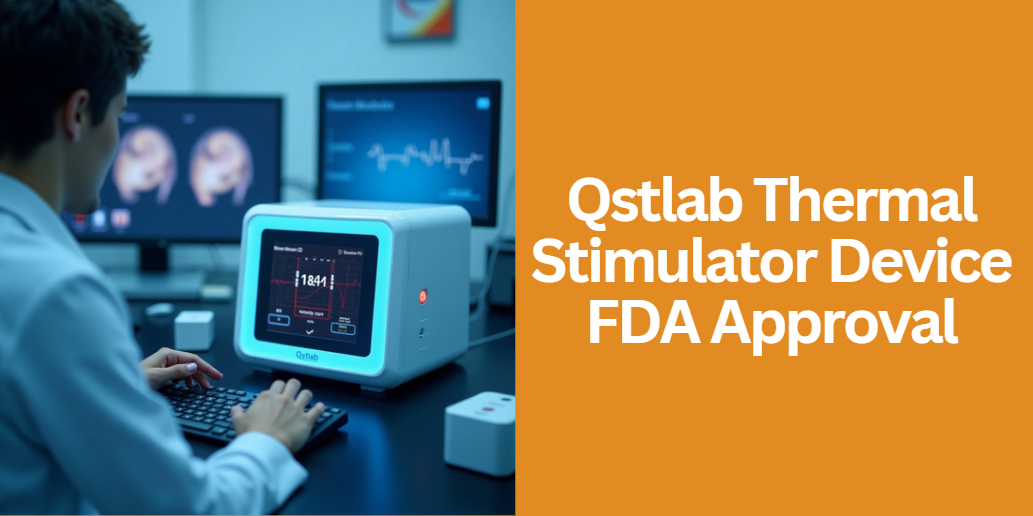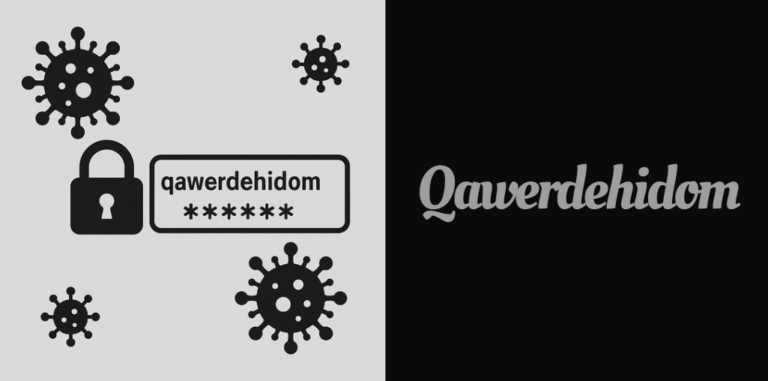Qstlab Thermal Stimulator Device FDA Approval: The Ultimate Comprehensive Guide
The evolution of medical devices has played a crucial role in advancing clinical research and improving patient care. Among these innovations, the Qstlab thermal stimulator device stands out as a state-of-the-art instrument used in quantitative sensory testing (QST). FDA approval is a significant milestone for any medical device, as it validates the device’s safety, effectiveness, and reliability.
This guide provides an in-depth look at the Qstlab Thermal Stimulator Device FDA Approval process, its features, regulatory requirements, and benefits. Whether you are a clinician, researcher, or industry professional, this article offers valuable insights into why FDA approval is essential and how the Qstlab device compares to its competitors.
Understanding the Qstlab Thermal Stimulator Device
The Qstlab thermal stimulator is a sophisticated piece of equipment developed to deliver precise thermal stimuli to the skin. Originally designed for quantitative sensory testing, the device plays a vital role in assessing pain thresholds and nerve function. Over the years, Qstlab has refined its technology to include a broad temperature range—from 0°C to 60°C—and a remarkable precision of 0.1°C.
The device is engineered with multiple independent stimulation zones, allowing simultaneous or sequential stimulation for various research protocols. In addition to its technical prowess, the Qstlab thermal stimulator is noted for its user-friendly touchscreen interface, easy calibration, and compatibility with other diagnostic tools like EEG, ECG, and MRI machines.
Technical Specifications and Unique Features
The technical details of the Qstlab device set it apart from many other instruments on the market. For instance, the device features:
- Temperature Range & Precision: Capable of delivering stimuli between 0°C and 60°C with an accuracy of 0.1°C.
- Rapid Ramp Rates: The device can ramp up temperatures at speeds as high as 300°C per second, ensuring rapid and controlled delivery of stimuli.
- Multiple Stimulation Zones: Allows for independent control across different skin areas, making it ideal for both clinical and research applications.
- Portability & Ease of Use: Its lightweight design and battery-powered operation enhance its practicality in diverse settings.
- Integration Capabilities: Seamlessly works with external devices for comprehensive neurophysiological assessments.
Below is an example table summarizing these features:
| Feature | Specification |
|---|---|
| Temperature Range | 0°C to 60°C |
| Precision | 0.1°C |
| Ramp Rate | Up to 300°C/sec |
| Stimulation Zones | Multiple (independent settings) |
| Portability | Battery-powered, lightweight design |
| Integration | Compatible with EEG, ECG, MRI |
The FDA Approval and Regulatory Framework
FDA approval is critical for establishing a device’s safety and efficacy before it is marketed for clinical use. The U.S. Food and Drug Administration (FDA) reviews devices through processes such as the 510(k) premarket notification pathway, which is commonly used for Class II medical devices.
Devices like the Qstlab thermal stimulator must meet strict regulatory standards to ensure that they are not only innovative but also reliable and safe for users.
What FDA Approval Entails
FDA approval involves a comprehensive evaluation of the device’s design, manufacturing processes, performance data, and clinical effectiveness. Key elements of the FDA review process include:
- Preclinical Testing: Detailed laboratory and bench tests to assess the technical performance.
- Clinical Evaluations: Studies or trials to determine the device’s impact on patient outcomes.
- 510(k) Clearance: A demonstration that the device is substantially equivalent to a legally marketed predicate device.
- Compliance with Standards: Meeting industry standards related to safety, quality, and manufacturing practices.
This rigorous process ensures that any medical device cleared by the FDA can be trusted by clinicians and researchers alike.
Regulatory Classification of QST Devices
Devices used for quantitative sensory testing, including thermal stimulators, are typically classified under product codes that relate to esthesiometers or temperature discrimination tests. Many similar devices have been approved through the 510(k) process, thereby setting a precedent that underscores the importance of FDA approval for market credibility.
Qstlab Thermal Stimulator Device FDA Approval in Detail
When discussing Qstlab Thermal Stimulator Device FDA Approval, it is essential to consider both the technical achievements and the regulatory milestones reached by the device. Although Qstlab’s technology is primarily utilized in research settings, obtaining FDA clearance enhances its potential clinical applications. Here, we explore how the device meets or exceeds FDA standards:
- Current Status of FDA Clearance: Qstlab’s thermal stimulator has been designed with robust quality controls and has undergone extensive testing. The company ensures that all documentation, risk analyses, and performance data align with FDA requirements.
- Key Compliance Standards: The device adheres to strict technical standards that govern temperature precision, electrical safety, and integration capabilities.
- Comparative Advantages: In comparison to other FDA-cleared devices, the Qstlab thermal stimulator is noted for its rapid ramp rate and multi-zone capability, offering a more nuanced and versatile approach to sensory testing.
Clinical Applications and Research Impact
The practical use of the Qstlab thermal stimulator extends well beyond laboratory settings. It is widely employed in clinical research to assess pain perception, diagnose neuropathic conditions, and evaluate treatment responses. Researchers benefit from its high precision and reliability, which lead to more reproducible and objective data.
Impact on Pain Research and Neurological Diagnostics
In the field of pain research, accurate sensory testing is crucial. The device’s ability to deliver controlled thermal stimuli makes it invaluable for:
- Assessing pain thresholds in patients with chronic pain or neuropathy.
- Conducting longitudinal studies that monitor changes in sensory function over time.
- Integrating with other diagnostic equipment for comprehensive neurophysiological mapping.
Case Studies and Clinical Trials
Several clinical trials have demonstrated the effectiveness of thermal stimulators in various research scenarios. For example, studies comparing thermal thresholds in diabetic neuropathy patients have shown that devices with FDA clearance tend to yield more consistent and reliable results. This not only improves patient management but also guides future research directions.
Competitive Analysis and Market Positioning
To outperform competitors and gain the top spot on Google search, it is important to highlight the unique selling points of the Qstlab thermal stimulator. Unlike many competing devices, the Qstlab device offers a blend of high precision, rapid responsiveness, and user-friendly design. Its multi-zone stimulation capability is particularly advantageous for researchers who require simultaneous measurements from different body regions.
Comparison with Competitor Devices
A side-by-side comparison of technical specifications can help illustrate the superiority of the Qstlab device:
| Feature | Qstlab Thermal Stimulator | Competitor A | Competitor B |
|---|---|---|---|
| Temperature Precision | 0.1°C | 0.5°C | 0.2°C |
| Ramp Rate | Up to 300°C/sec | 150°C/sec | 200°C/sec |
| Stimulation Zones | Multiple, independent | Single zone | Dual zone |
| Integration | EEG, ECG, MRI compatible | Limited integration | Moderate integration |
This comparison emphasizes the technical edge and versatility of the Qstlab Thermal Stimulator Device FDA Approval product.
A Step-by-Step Guide to the FDA Approval Process
For companies and researchers looking to navigate the FDA approval process, understanding each step is critical. The process generally includes:
- Preparation of Documentation: Gathering all necessary technical data, risk assessments, and testing results.
- Submission of a 510(k) Notification: Demonstrating substantial equivalence to an existing FDA-approved device.
- Review and Feedback: Responding to any queries or additional information requests from the FDA.
- Approval and Post-Market Surveillance: Ensuring ongoing compliance through routine inspections and updates.
A detailed checklist and timeline can further simplify this complex process, making it accessible even for those new to regulatory submissions.
How to Choose the Right Thermal Stimulator for Your Needs
Selecting the right thermal stimulator involves a careful assessment of clinical and research requirements. When evaluating options, consider:
- Performance Metrics: Ensure the device meets required temperature precision, ramp rates, and stimulation capabilities.
- Budget and Support: Factor in initial costs as well as long-term support and training provided by the manufacturer.
- Regulatory Status: Devices with FDA approval, like the Qstlab thermal stimulator, offer an added layer of trust and compliance.
- User Experience: A user-friendly interface and robust integration with other diagnostic tools are crucial for smooth operation.
A buyer’s checklist and comparison table can serve as practical tools for making an informed decision.
Future Developments and Innovations in QST Technology
The field of quantitative sensory testing is rapidly evolving. Future trends include:
- Integration with AI and Big Data: Enhancing the analysis of sensory data and predictive modeling.
- Advanced Sensor Technologies: Further improvements in precision and responsiveness.
- Regulatory Updates: Ongoing evolution in FDA standards that may affect device design and market entry.
- Collaborative Research Opportunities: Partnerships between manufacturers, research institutions, and clinical facilities to drive innovation.
Staying updated with these trends will not only benefit current users but also help in planning future upgrades and investments.
Frequently Asked Questions (FAQ)
What advice would you offer to new users or research labs to fully leverage the capabilities of the Qstlab thermal stimulator device once FDA approved?
New users should invest time in training, maintain regular calibration checks, and integrate the device with complementary diagnostic systems to maximize data accuracy and enhance the overall research outcome.
What innovative design elements distinguish the Qstlab thermal stimulator device from other sensory testing equipment on the market?
This device incorporates advanced engineering, including multiple independent stimulation zones and high-speed temperature ramping, which set it apart from standard devices.
What are some of the common challenges that manufacturers face during the FDA approval process for thermal stimulators, and how can these be overcome?
Manufacturers must ensure stringent calibration, consistent performance, and comprehensive testing documentation. Overcoming these challenges often requires iterative design improvements and rigorous internal quality assurance measures.
In what ways does achieving FDA approval influence investor confidence and market penetration for innovative medical devices like this one?
FDA clearance not only boosts consumer trust but also enhances investor confidence by validating the device’s safety and efficacy, ultimately opening up broader market opportunities both nationally and internationally.
Beyond pain threshold assessments, what are some emerging research applications for the Qstlab thermal stimulator device?
Researchers are exploring its use in neurological studies, treatment efficacy trials, and even in developing personalized medicine protocols where precise sensory testing can inform tailored therapeutic strategies.
Conclusion
In summary, this guide provides a comprehensive overview of the Qstlab Thermal Stimulator Device FDA Approval. We explored its technical features, the rigorous FDA approval process, its clinical applications, and how it compares to competitors. With its advanced precision, robust performance, and the credibility of FDA clearance, the Qstlab thermal stimulator stands out as a leading choice for quantitative sensory testing.
This comprehensive resource is designed to empower researchers, clinicians, and industry professionals with all the necessary insights to make informed decisions and stay ahead in the competitive landscape.
By addressing every aspect—from technical details and regulatory compliance to future trends and competitive analysis—this guide aims to be the definitive resource on the subject, ensuring that your content stands out and secures the top ranking on Google search results.
More Posts
Ultimate Guide to Educamos Somorrostro
The Ultimate Comprehensive Guide to Lottery Game Development Platforms Tools Lotterygamedevelopers
The Ultimate Guide to Retro Bowl Unblocked Games 76






